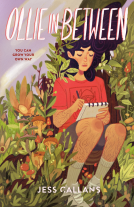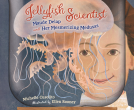
Seen and Unseen
What Dorothea Lange, Toyo Miyatake, and Ansel Adams's Photographs Reveal About the Japanese American Incarceration
by Elizabeth Partridge
This title was previously available on NetGalley and is now archived.
Send NetGalley books directly to your Kindle or Kindle app
1
To read on a Kindle or Kindle app, please add kindle@netgalley.com as an approved email address to receive files in your Amazon account. Click here for step-by-step instructions.
2
Also find your Kindle email address within your Amazon account, and enter it here.
Pub Date Oct 25 2022 | Archive Date Oct 25 2022
Talking about this book? Use #SeenandUnseen #NetGalley. More hashtag tips!
Description
Three months after Japan attacked Pearl Harbor in 1941, US President Franklin D. Roosevelt ordered the incarceration of all Japanese and Japanese Americans living on the West Coast of the United States. Families, teachers, farm workers—all were ordered to leave behind their homes, their businesses, and everything they owned. Japanese and Japanese Americans were forced to live under hostile conditions in incarceration camps, their futures uncertain.
Three photographers set out to document life at Manzanar, an incarceration camp in the California desert:
Dorothea Lange was a photographer from San Francisco best known for her haunting Depression-era images. Dorothea was hired by the US government to record the conditions of the camps. Deeply critical of the policy, she wanted her photos to shed light on the harsh reality of incarceration.
Toyo Miyatake was a Japanese-born, Los Angeles–based photographer who lent his artistic eye to portraying dancers, athletes, and events in the Japanese community. Imprisoned at Manzanar, he devised a way to smuggle in photographic equipment, determined to show what was really going on inside the barbed-wire confines of the camp.
Ansel Adams was an acclaimed landscape photographer and environmentalist. Hired by the director of Manzanar, Ansel hoped his carefully curated pictures would demonstrate to the rest of the United States the resilience of those in the camps.
In Seen and Unseen, Elizabeth Partridge and Lauren Tamaki weave together these photographers' images, firsthand accounts, and stunning original art to examine the history, heartbreak, and injustice of the Japanese American incarceration.
AWARENESS OF AMERICAN HISTORY: This impactful book engages with an underrepresented topic in American history, and highlights important and timely themes like primary sources, censorship, and visual literacy.
SUBSTANTIAL BACKMATTER: Featuring eighteen pages of backmatter, including an Author's and Illustrator's Note, footnotes, photo credits, biographies of each photographer, and more.
Perfect for:
Parents
Educators
Librarians
Marketing Plan
National Media Campaign
National Consumer Advertising Campaign
Major Promotion At Select National School And Library Conferences
Virtual Events Tour
Extensive Outreach To Key Educators And Library Contacts
Social Media Outreach Campaign
Digital Consumer Content
Parenting/Educator Blogger Campaign
Chronicle Books E-Newsletter Feature
Available Editions
| EDITION | Other Format |
| ISBN | 9781452165103 |
| PRICE | $21.99 (USD) |
Featured Reviews
 Book Trade Professional 983374
Book Trade Professional 983374
I predict this excellent book will garner accolades and awards. Beautifully done in terms of balancing actual photographs, text, illustrations, in a skillfully designed layout. The injustice of forcing Japanese Americans into what were essentially concentration camps was captured by three notable photographers: Dorothea Lange, Toyo Miyatake, Ansel Adams. Through the lenses and the contexts, readers learn about the experience of internment camp and the duplicity of the U.S. government during this time.
It's hard to express how much a book like this one means to me, a third-generation Japanese American, who has always felt 100% American, but knows our dark history during the war.
I grew up in Hawaii, where a large part of the population is Japanese. Many people, including my own grandparents, immigrated from Japan to Hawaii in the early 1900s in order to work on the plantations. They moved here for the opportunity. My grandfather, as a fourth son, had no opportunities or land in Japan. So he moved to Hawaii and raised his ten children there.
But the Japanese in Hawaii, despite Pearl Harbor, were not detained like those in the West Coast. My great-aunt on the other side of my family, who lived in San Francisco's Japantown for many decades, often told stories of how San Francisco was heavily impacted during the early 1940s when those of Japanese descent, including American born citizens, were sent away to the relocation camps.
This book is different than others. First off, it centers around photographs from the camps. It also includes quotes and other factual artifacts such as newspaper clippings, the detainee signs, and other artifacts. The photos speak for themselves.
The book itself is laid out very clearly, and is set up like a museum display would. It captures the historical moments, and well as the personal parts, so well. I consumed the information and learned a lot, but it also moved me to tears.
I will for sure be buying a copy of this book for my home library, and also my childrens' school library. I appreciate the chance to preview it and am grateful to the authors and publisher for the opportunity.
Great book for the classroom - clear explanations and images that will help students learn more about the internment camps during World War 2.
 Myra Z, Educator
Myra Z, Educator
This is an excellent book for learning about the Japanese incarceration during World War II. It provides a discussion of the incarceration as seen by the works of three photographers--Toyo Miyatake, Dorothea Lange, and Ansel Adams. These photographers had different perspectives, and this is clearly shown. The book is creatively designed and illustrated, combining photographs, maps, documents, contrasting colors, and interesting page designs. The text is clear, informative, and interesting. There are so many issues that we are still dealing with today that would be useful and important to discuss with young readers. The back matter is outstanding. It includes discussions of the aftermath of the war, why words matter, how citizenship was violated, and more. Especially useful and interesting are the author's note and illustrator's note, both of which share personal connections to the Japanese experience of incarceration. This is an excellent choice for libraries, classrooms, and book discussion groups.
 Librarian 825809
Librarian 825809
I happened across this book when browsing through upcoming releases on NetGalley, and it immediately caught my eye since my family was incarcerated during WWII. I've read a number of accounts, but this was a really nice addition with the beautiful artwork, both original hand-drawn work, as well as the historical photos. They weave together beautifully to bring contextual storytelling to the prints. I have seen photos over the years from both Lange and Adams, but I never really thought or heard about the framing of those photos, so it was really interesting to learn more about the intent behind the photos and what was permitted to be captured and shared. I had also never heard of Toyo Miyatake, so it was cool to also have his insider photos in the mix to get a fuller picture from the multiple perspectives. Providing a historical overview if people are new to the topic, this captured my interest with its fresh insights on what historical records are told through curated lenses.
Absolutely stunning book detailing the Japanese internment camps during WWII. Illustrations by artist Lauren Tomaki compliment photographs taken by by Dorothea Lang, Ansel Adams, and Toyo Miyatake. Exceptional work.
Thank you to #NetGalley and Chronicle Books for allowing me to read a digital ARC of Seen and Unseen: What Dorothea Lange, Toyo Miyatake, and Ansel Adams's Photographs Reveal About the Japanese American Incarceration by Elizabeth Partridge and Lauren Tamaki. This middle grades nonfiction book will be published October 25, 2022. All opinions are my own.
Following Japan's attack on Pearl Harbor in 1941, President Franklin D. Roosevelt ordered the incarceration of all Japanese and Japanese Americans living on the West Coast of the United States. Families were ordered to leave behind their homes, businesses, and everything they owned and were transported to incarceration camps (often referred to at the time as internment camps). They were forced to live under hostile conditions. Dorothea Lange, Toyo Miyatake, and Ansel Adams set out to document life at Manzanar, an incarceration camp in the California desert. This book uses their photos, firsthand accounts, and original artwork to "examine the history, heartbreak, and injustice of Japanese incarceration" (Netgalley summary).
This is a beautifully written and designed text. The book makes what happened at Manzanar and other camps across the United States accessible for the middle grade reader. It also doesn't shy away from addressing the injustices and racism that occurred. For example, the book calls Manzanar and the other camps what they were: concentration and incarceration camps. The artwork and photography are amazing. The combination of photos, illustration, and a stark color palette help to evoke emotion and make an impact on the reader. I found this book very informative and will be adding a copy to my classroom library.
This is an excellent historical book that features multimedia (photographs, drawings, historical artifacts and text) to tell the story of incarceration of Japanese Americans during WWII. When you think about the concept of thinking like a historian for students, this book absolutely supports that investigative thinking.
I love that it doesn't just relate the story of internment through the lens of an outsider. You are presented with three different perspectives: one that disagreed with the internment, one who went through the internment and one who was indifferent but supported the release of those who said they were loyal the U.S. government. I appreciated that the book begins with Japanese American photographer Toyo Mitake. Through him you get see the unfiltered resiliency of those who were incarcerated because he was a member of the community.
Also important was the back matter in the book that included magazine-style articles and author's notes that give additional historical context. Lauren Tamaki's artwork is also extraordinary.
I would absolutely recommend this for use in curriculums whether English, Social Studies or Journalism. It is categorized as middle grades, but I would definitely be tempted to use it with older students as a mentor text on incorporating different mediums to tell a historical story.
 Librarian 757656
Librarian 757656
I loved the bold, compelling graphics and the visual and written storytelling - they immediately draw the reader in and increase the comprehensibility of this history, especially for young people. I appreciate the in-depth research as it gives the reader access to these materials, photos, artifacts, but I wish there were more balance between the three photographers. The section about Dorothea Lange was much longer than the section on Miyatake - possibly because Partridge is Lange's goddaughter and had greater access to these materials - but I wish there were greater balance.
 Elley S, Librarian
Elley S, Librarian
Thank you, NetGalley and Chronicle Books, for providing the E-ARC!
This book is powerful!! I haven’t read a lot of children’s nonfiction about this topic, and I thought that it brings to light America’s problematic past. I loved how they used photography and brought to light of the many photographers and their different motivations. The back matter is awesome and I liked the power that the words/phrases also bring.
Excellently poignant book.


















